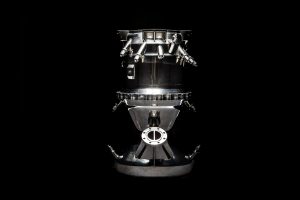On July 7, 1908, the cutter Albatross was cruising the volcanic islands of Alaska when the sea began to swell into a dome the size of the nation’s Capitol building, as one account noted with admirable specificity. It bulged and bulged some more until it ruptured, releasing a plume of gas and steam that spewed from the sea with such intensity that “the spellbound spectators began to fear they would be engulfed in a terrific cataclysm,” wrote William Thornton Prosser in his essay “Nature Turned Sorceress.”
The Earth that day had burped—big time. An underwater volcano released a cloud of carbon dioxide, sulfur dioxide, and water vapor that rose to the surface as a bubble before destabilizing and exploding, giving the officers of the Albatross a show few humans had ever witnessed—and few have witnessed since.
That is, until late 2016, when a nearby underwater volcano named Bogoslof (its summit peeks just above the water, forming Bogoslof Island), began acting up, and fancy microphones 40 miles away happened to be listening. By analyzing low-frequency infrasounds (which our own ears can’t pick up) coming from the area, researchers have determined that for over half a year, the volcano released gas in the same variety of massive bubbles the Albatross crew spied, over and over. How massive? Try an average of 750 feet across, each one holding 180 million cubic feet of gas. The biggest one was a quarter-mile wide, uberbubbles that swelled to the surface in great domes, ruptured, and threw clouds of volcanic muck seven miles high.
Bogoslof is one of the tinier specks of land in the Aleutian Islands, but the bit above ground isn’t our concern—the vent that blew those bubbles is just off the island’s coast, submerged in maybe 100 feet of water. In late 2016, Bogoslof began bubbling up magma from the sea floor. That lava would cool and form a kind of cap over the vent, sealing in gases like carbon dioxide and sulfur dioxide. But eventually the pressure would grow too great and the lava scab would fracture to release a burst of gas. Then it would seal once more with lava, until that too would break and belch another bubble.
As the bubbles ascended to the surface, they didn’t disconnect from the vent as a nice clean sphere. Instead, the vent continuously fed the bubbles with gas as they rose. Think of it as more like those big bubble wands that trail one long bubble, as opposed to the little spherical bubbles that might stream out of a smaller wand. And when one of these underwater bubbles reached the surface, it grew like the bulge the Albatross witnessed over a century ago.



